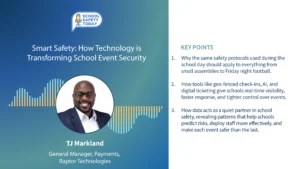The Critical Role of Schools in Mental Health
Student mental health incident rates and severity were already on the rise before the pandemic. COVID-19 has placed new strains on school districts to support students, with both new problems and opportunities. 20-year education veteran and VP of District Partnerships for Effective School Solutions (ESS), Michael Roseman joins the Voices of eLearning podcast to talk about the state of mental health in K-12 before and after COVID-19.
“Before the pandemic, some districts were doing well; others were supporting students at different tiers. Typically, there were two traditional approaches when it came to mental health in schools – random acts of therapy or if that approach doesn’t work, sending students to an Out-of-District Placement.” Roseman said.
Roseman shared that before the pandemic, about 20% of students were living with mental health issues. That’s now been exasperated by COVID-19. “School has often been a safety net for students, coming from traumatic backgrounds,” he noted.
Districts struggled with pre-pandemic concerns—school avoidance, escalating student behaviors, and lack of clinical resources. The pandemic changed the landscape, creating more trauma but also possibilities.
“The receptivity to tele-mental health services is one silver lining of the pandemic. Also, I think the reprioritization by schools that student mental health is just as critical as academics in unlocking a student’s full potential is another byproduct of the pandemic and this acknowledgement of Maslow before Bloom.”
One significant aspect of the modern approach to student mental health is social emotional learning (SEL). “SEL focuses a lot on mindfulness, building resilience, distress tolerance, and managing emotions. There’s a huge connection between SEL and mental health,” Roseman commented.
The emotional toll of the pandemic is real, with the CDC reporting, 25% of young adults contemplated suicide during the time. ESS became aware of this statistic and did a qualitative study.
“We found the traumatic impact of COVID-19 falling into four main buckets: academic stressors, family and economic stressors, social isolation, and anxiety about COVID-19. With this understanding, the consequences of ignoring mental health are the most tragic. I recommend any school district start with appraising where you are with a program and building from there,” Roseman said.










